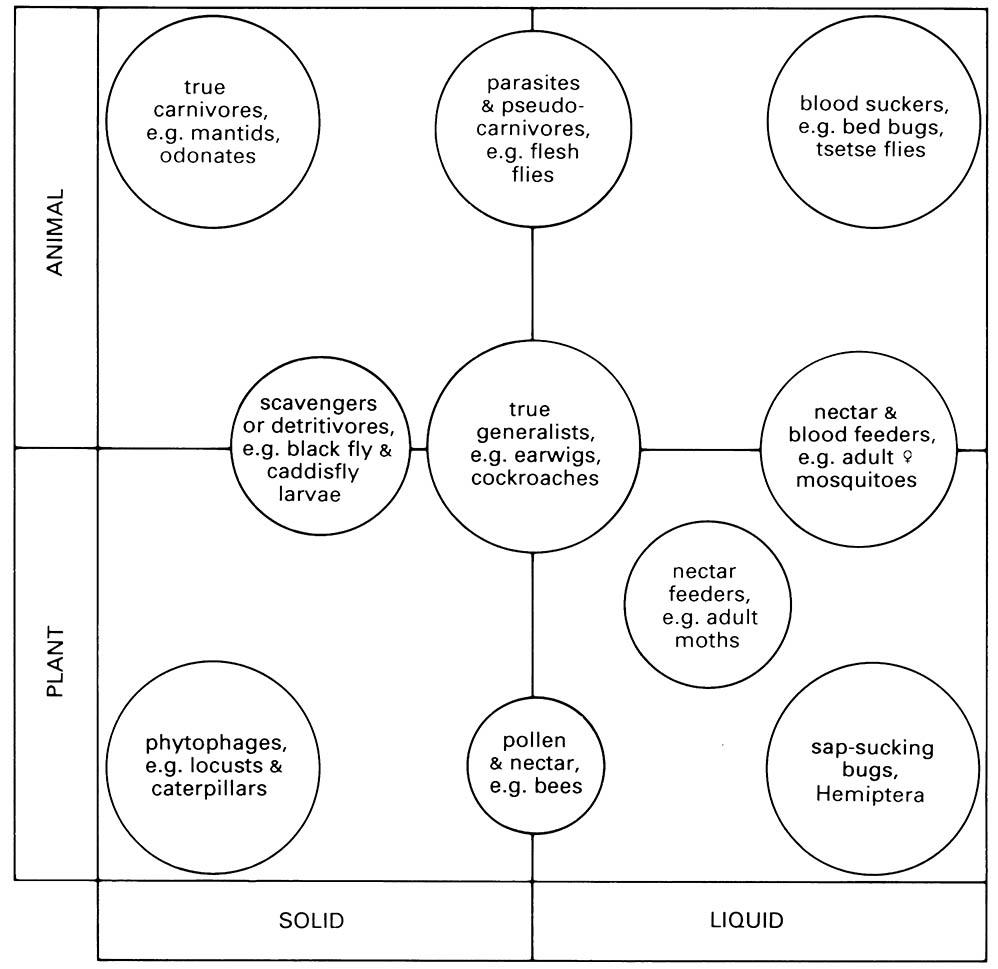3.6. The gut, digestion, and nutrition
Insects of different groups consume an astonishing variety of foods, including watery xylem sap (e.g. nymphs of spittle bugs and cicadas), vertebrate blood (e.g. bed bugs and female mosquitoes), dry wood (e.g. some termites), bacteria and algae (e.g. black fly and many caddisfly larvae), and the internal tissues of other insects (e.g. endoparasitic wasp larvae). The diverse range of mouthpart types (section 2.3.1) correlates with the diets of different insects, but gut structure and function also reflect the mechanical properties and the nutrient composition of the food eaten. Four major feeding specializations can be identified depending on whether the food is solid or liquid or of plant or animal origin (Fig. 3.12).
Some insect species clearly fall into a single category, but others with generalized diets may fall between two or more of them, and most endopterygotes will occupy different categories at different stages of their life (e.g. moths and butterflies switch from solid- plant as larvae to liquid-plant as adults). Gut morphology and physiology relate to these dietary differences in the following ways. Insects that take solid food typically have a wide, straight, short gut with strong musculature and obvious protection from abrasion (especially in the midgut, which has no cuticular lining). These features are most obvious in solid-feeders with rapid throughput of food as in plant-feeding caterpillars. In contrast, insects feeding on blood, sap, or nectar usu- ally have long, narrow, convoluted guts to allow maximal contact with the liquid food; here, protection from abrasion is unnecessary. The most obvious gut specialization of liquid-feeders is a mechanism for removing excess water to concentrate nutrient substances prior to digestion, as seen in hemipterans (Box 3.3). From a nutritional viewpoint, most plant-feeding insects need to process large amounts of food because nutrient levels in leaves and stems are often low. The gut is usually short and without storage areas, as food is available continuously. By comparison, a diet of animal tissue is nutrient-rich and, at least for predators, well balanced. However, the food may be available only intermittently (such as when a predator captures prey or a blood meal is obtained) and the gut normally has large storage capacity.

Many insects are typical of one category, but others cross two categories (or more, as in generalist cockroaches). (After Dow 1986)

